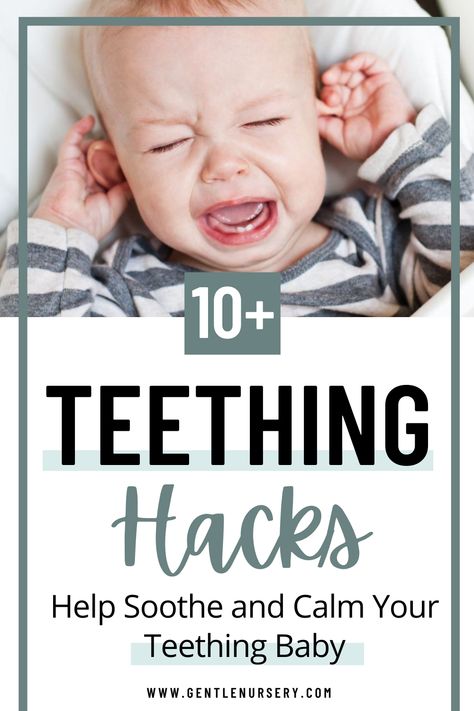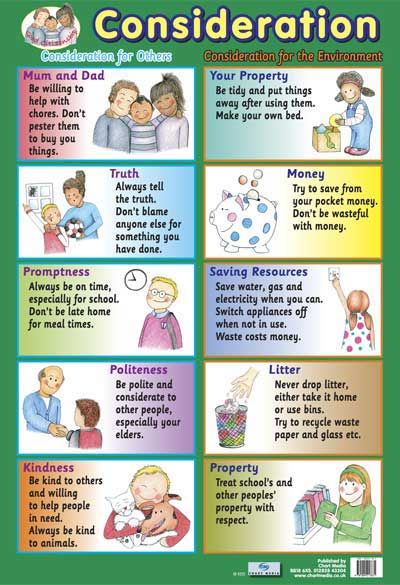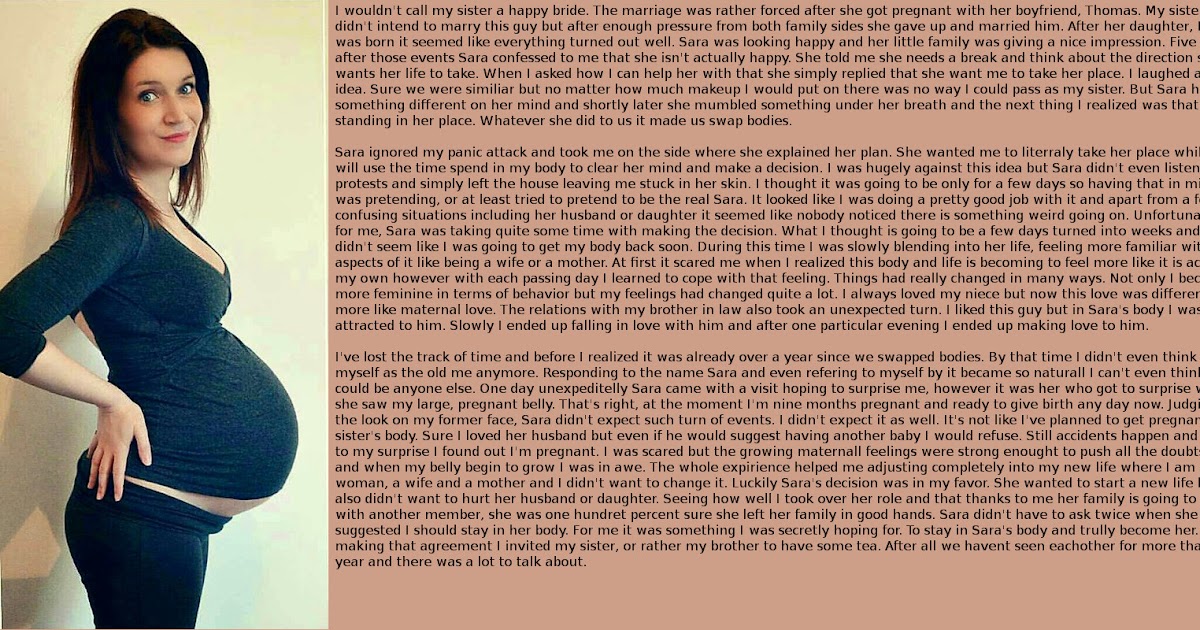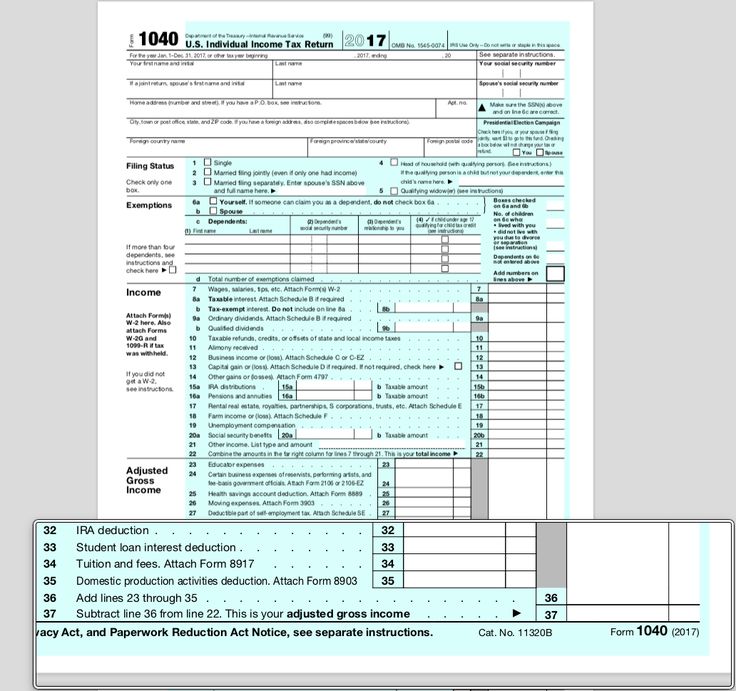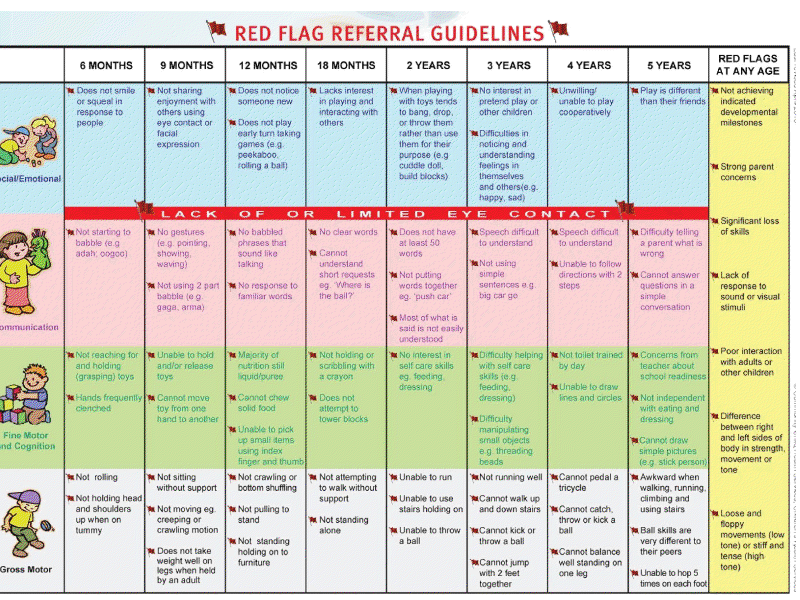What to do when your baby is teething
Safely Soothing Teething Pain and Sensory Needs in Babies and Older Children
Consider treating teething pain with a teething ring made of firm rubber (not frozen) or by rubbing the gums with a clean finger.Español
Teething is normal but may be a painful experience for infants and toddlers. Too often, well-meaning parents and caregivers who want to ease a child’s pain turn to medications and products that could be harmful.
Soothing children’s gums with prescription or over-the-counter (OTC) drugs, homeopathic drugs, or teething jewelry marketed for relieving teething pain may seem like good options. But those products can be dangerous and can lead to serious injury or even death. This also applies to older children with special needs who may use teething jewelry for sensory stimulation.
The American Academy of Pediatrics (AAP) recommends alternative ways for treating teething pain, including rubbing infants’ gums with a clean finger or providing a teething ring made of firm rubber to chew on. For children with sensory stimulation needs, parents and caregivers should talk to their child’s health care provider about safer options.
On average, children begin teething around 4 to 7 months, and have a total of 20 “baby teeth” by age 3. According to the AAP, occasional symptoms of teething include mild irritability, a low-level fever, drooling, and an urge to chew something hard.
The Risks of Teething Bracelets, Necklaces and Other Jewelry
Teething jewelry includes necklaces, bracelets, and other jewelry worn by either an adult or child, used by parents and caregivers, and is marketed to relieve an infant’s teething pain. It may also be marketed for use by people with special needs, such as autism or attention deficit hyperactivity disorder, to provide sensory stimulation or redirect chewing on clothes or body parts.
The beads of the jewelry may be made with various materials such as amber, wood, marble, or silicone. Jewelry marketed for teething is not the same as teething rings or teethers, which are made of hard plastic or rubber and not wearable by an adult or child.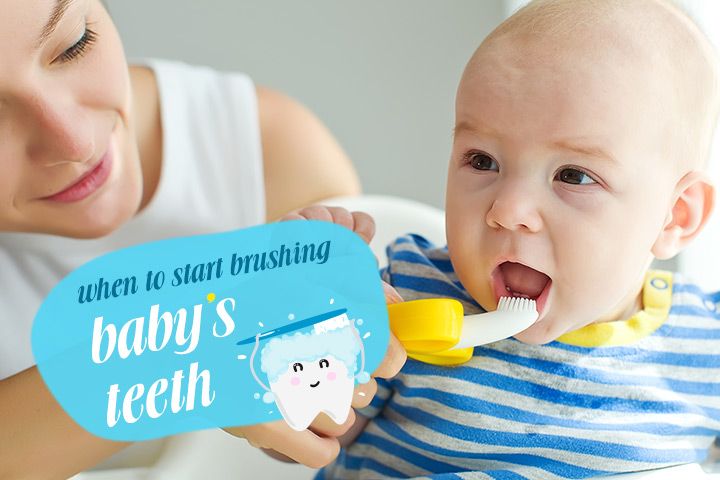
There are serious risks associated with using jewelry marketed for relieving teething pain such as choking, strangulation, injury to the mouth, and infection. Other concerns include potential injury to the mouth or infection if a piece of the jewelry irritates or pierces the child’s gums.
Teething Creams and Gels Also Have Risks
Parents and caregivers might also look to relieve a teething baby by rubbing numbing medications on the child’s gums. But the U.S. Food and Drug Administration (FDA) warns against using any sort of topical medication to treat teething pain in children, including prescription or OTC creams and gels, or homeopathic teething tablets. They offer little to no benefit and are associated with serious risk.
Benzocaine — a local anesthetic — is the active ingredient in several OTC oral health care products such as Anbesol, Baby Orajel, Cepacol, Chloraseptic, Hurricaine, Orabase, Orajel, and Topex. These products should not be used for teething because they can be dangerous and are not useful because they wash out of a baby’s mouth within minutes.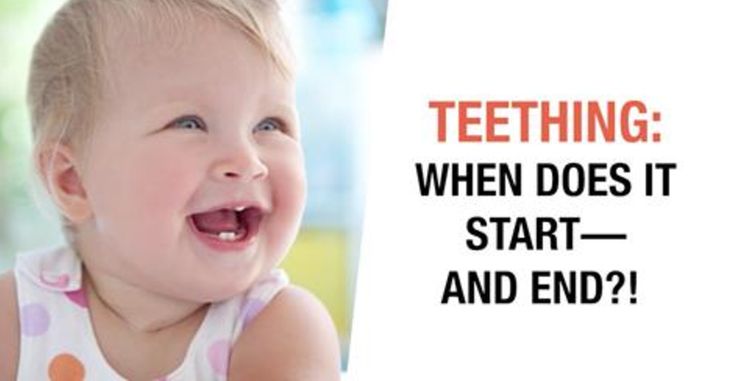
The use of benzocaine gels, sprays, ointments, solutions, and lozenges for mouth and gum pain can lead to a serious — and sometimes fatal — condition called methemoglobinemia, in which the oxygen-carrying capacity of red blood cells is greatly reduced.
Prescription and OTC benzocaine oral health care drug products are also widely used in adults. Doctors and dentists often use sprays containing benzocaine to numb the mucous membranes of the mouth and throat or to suppress the gag reflex during medical and surgical procedures, such as transesophageal echocardiograms, endoscopy, intubation, and feeding tube replacements. But benzocaine sprays are not FDA-approved for these uses.
Talk to your health care professional about using benzocaine and other local anesthetics, especially if you have heart disease; are elderly; are a smoker; or have breathing problems such as asthma, bronchitis, or emphysema. Those conditions put you at greater risk for complications relating to methemoglobinemia.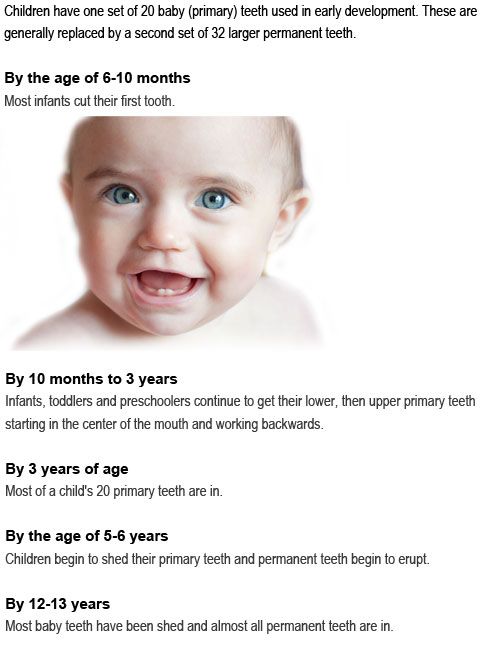
What You Can Do to Ease Teething Pain
If your child’s gums are swollen and tender, gently rub or massage the gums with your finger, or give your child a teething ring made of firm rubber to chew. Make sure the teething ring is not frozen. If the object is too hard, it can hurt your child’s gums. Parents should supervise their children so they don’t accidentally choke on the teething ring.
Parents and caregivers of children with special needs who may require sensory stimulation should talk to their child’s health care provider about safer options and treatment. Jewelry marketed for relieving teething pain and to provide sensory stimulation can lead to serious injuries, including strangulation and choking.
The FDA continues to closely monitor the use of teething jewelry and other teething pain relief products and is evaluating whether other actions are necessary to address the risks associated with these products, as part of its commitment to protecting public health – especially when it comes to the health and safety of children.
Consumers and health care professionals should notify the FDA of any adverse side effects when using drugs and devices the agency regulates, by reporting them online to MedWatch, the FDA’s safety information and adverse event reporting program, or by telephone at 1-800-FDA-1088.
Teething in Babies: Symptoms and Remedies
Written by WebMD Editorial Contributors
In this Article
- What Is Teething?
- When Do Babies Start Teething?
- Signs and Symptoms of Teething
- Order of Tooth Eruption
- Soothe a Teething Baby
- Treatments to Avoid
- Teething Necklaces
- Teething Medicine
- How to Care for Baby’s New Teeth
What Is Teething?
Teething is when your baby’s teeth start to come through their gum line.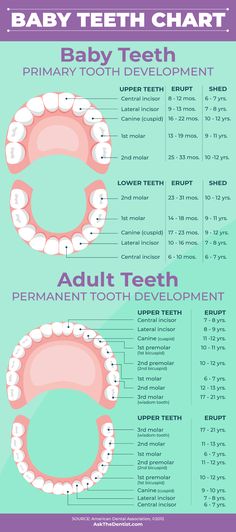 Another word for it is odontiasis.
Another word for it is odontiasis.
When Do Babies Start Teething?
Most babies begin to teethe between 4 and 7 months old, but some start much later. There’s no need to worry if your baby’s teeth come in on another timetable -- it can be different for every baby.
Signs and Symptoms of Teething
The symptoms aren’t the same for every baby, but they may include:
- Swollen, tender gums
- Fussiness and crying
- A slightly raised temperature (less than 101 F)
- Gnawing or wanting to chew on hard things
- Lots of drool, which can cause a rash on their face
- Coughing
- Rubbing their cheek or pulling their ear
- Bringing their hands to their mouth
- Changes in eating or sleeping patterns
Teething can be painful, but it doesn’t usually make babies sick. Call your doctor if your baby has diarrhea, vomiting, rashes on the body, a higher fever, or cough and congestion. These aren’t normal signs of teething.
You also should call the pediatrician if your baby’s gums are bleeding or you see any pus or swelling of their face.
Order of Tooth Eruption
When and how teeth come in can be different for every baby and may be based on family history. But most of the time, the lower front two teeth come in first between 6 and 10 months, followed by the opposite top two teeth and the two on either side of those between 8 and 13 months. Next come the two on either side of the bottom front teeth, then the first molars appear between 10 and 16 months. The teeth in front of the first molars are next, and the back molars are the last ones to come in.
In all, 20 “baby teeth” will eventually be in place, usually by age 3.
Soothe a Teething Baby
What works to soothe a friend’s baby might not work for yours. You may need to try different things to help your little one feel better:
- Something cold in your baby’s mouth, like a cold pacifier, spoon, clean wet washcloth, or a solid (not liquid) refrigerated teething toy or ring.
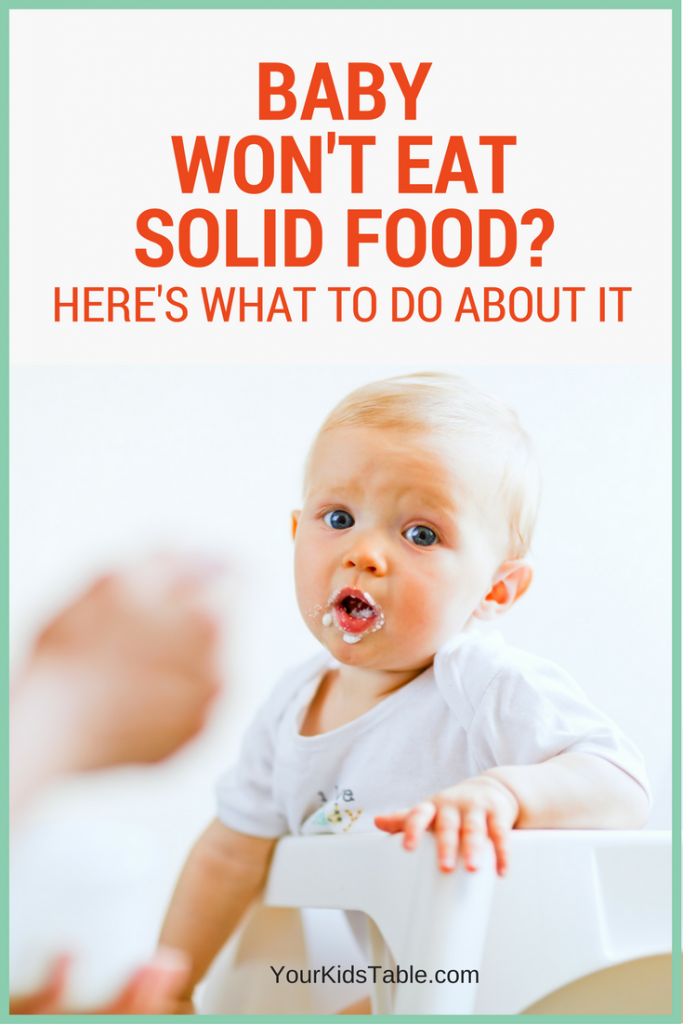 Some experts say frozen teething toys are too cold and may hurt your baby’s mouth. Make sure to clean teething toys, washcloths, and other items after the baby uses them.
Some experts say frozen teething toys are too cold and may hurt your baby’s mouth. Make sure to clean teething toys, washcloths, and other items after the baby uses them. - Try offering a hard, unsweetened teething cracker.
- If your baby is older than 6-9 months, you can offer cool water from a sippy cup, too.
- Massage the gums by gently rubbing them with your clean finger. If the teeth haven’t come in yet, you can let your baby gnaw on your finger. If you’re nursing your baby, try dipping your fingers in cool water and massaging their gums before each feeding. That may keep them from biting your nipple while nursing.
Treatments to Avoid
Never put anything in your baby’s mouth that isn’t specifically approved to help soothe teething. Even some products described as teethers or teething aids aren’t safe choices, including ones:
- Filled with liquid that can tear and spill
- Made of breakable material, like plastic, that can possibly lead to choking
- That are frozen solid -- these can be too hard on a baby’s mouth
Another reason to be aware of the material used to make the teethers: Some can be made from harmful substances, like lead.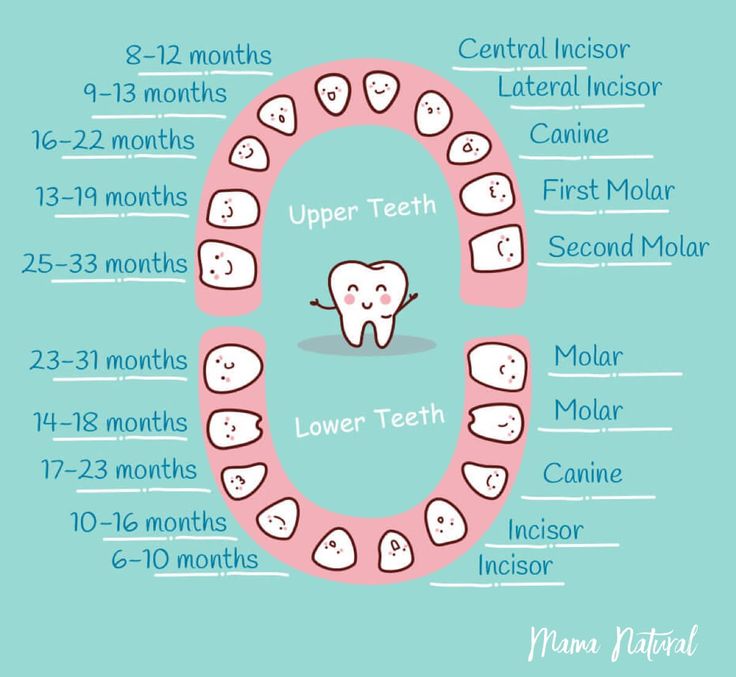 Look for ones made of rubber.
Look for ones made of rubber.
Teething Necklaces
Child health experts don’t recommend teething necklaces. They’re dangerous: They can strangle the baby. They also can choke if the necklace breaks and they swallow the beads.
If you do choose to use one, make sure to:
- Put it on a wrist or ankle, not around the baby’s neck.
- Always watch your baby when they wear it.
- Take it away when you aren’t watching your baby, even for a very short time.
You may have heard that amber teething necklaces release a pain reliever when heated. That’s not proven, and doctors say using one is not a good idea.
Teething Medicine
Medicine that you rub on your baby’s gums to stop the pain of teething may not help. It quickly washes away in the mouth and may numb the back of their throat and make it hard for them to swallow.
Stay away from over-the-counter teething gels and liquids that have the ingredient benzocaine. The FDA says this ingredient shouldn’t be given to children under 2.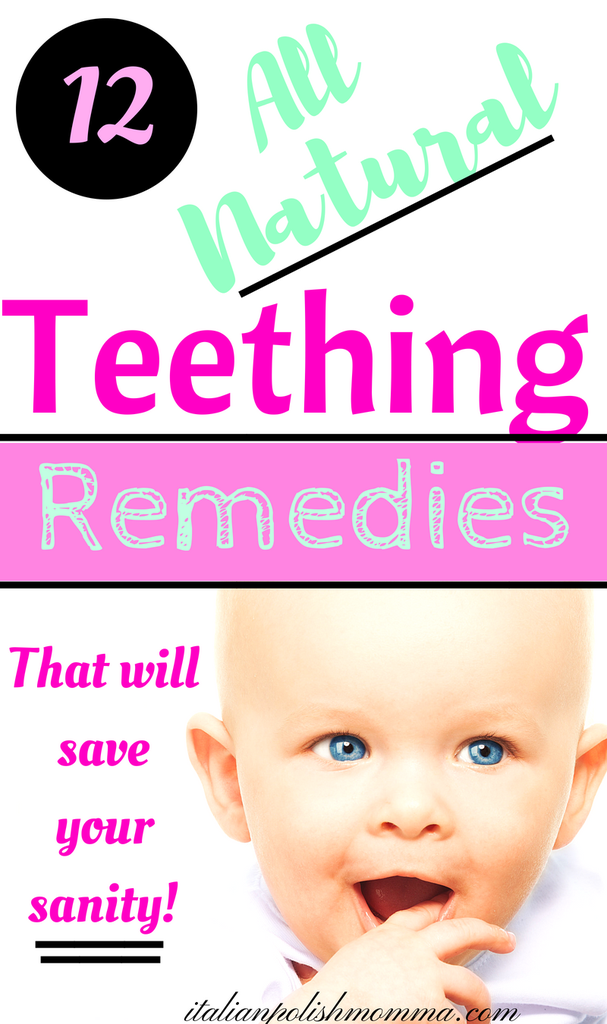 It can cause rare but serious side effects.
It can cause rare but serious side effects.
A small dose of a children’s pain reliever, such as acetaminophen, may help your baby. Don’t use ibuprofen for an infant under 6 months old, and ask your doctor before giving your baby any medication. Use it exactly as the doctor says.
Teething can be rough for you and your baby at first. But it’ll get easier as you both learn how to soothe each new tooth that pops out.
How to Care for Baby’s New Teeth
Good oral hygiene is important, even before your baby has teeth:
- Until teeth start to come in, clean your baby’s gums with a wet washcloth or piece of gauze at least once a day.
- Once they have teeth, clean your baby’s mouth the same way at least twice a day. After feedings is a good time for this.
- After their first birthday, you can start to use a soft-bristled baby toothbrush with water and a small amount of toothpaste that doesn’t have fluoride in it. You can also start flossing between their teeth.
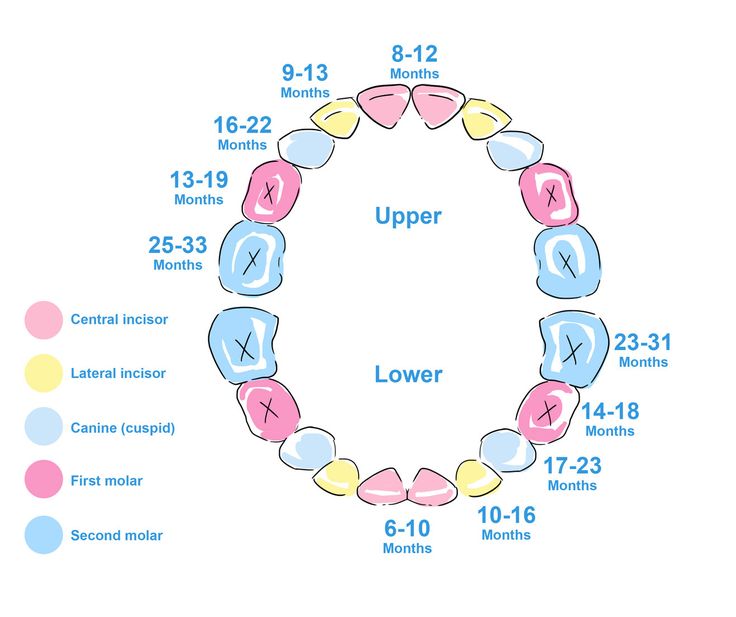
Your child should see a pediatric dentist when the first tooth appears, or no later than their first birthday.
When teeth are cut - BLOG of pediatric dentistry UtkinZub in Moscow
Teething in children, , or more correctly, teething, is often accompanied by various changes in the behavior and well-being of the baby, which is very frightening for parents who are not ready for such a development of events. What symptoms of teeth in children should alert adults what to do.
Helping your baby when teething
If your baby is just worried when teething, saliva constantly flows, he sucks his fingers or tries to scratch his gums with something, helping the baby is quite simple:
- Keep a few very soft wipes and constantly wipe saliva. This will protect the baby from irritation of the skin of the face. When sleeping, put a napkin under your baby's head to absorb involuntary saliva.
- Be sure to buy quality special silicone toys for developing gums - teethers, or special rings with liquid so that the baby can chew on them.
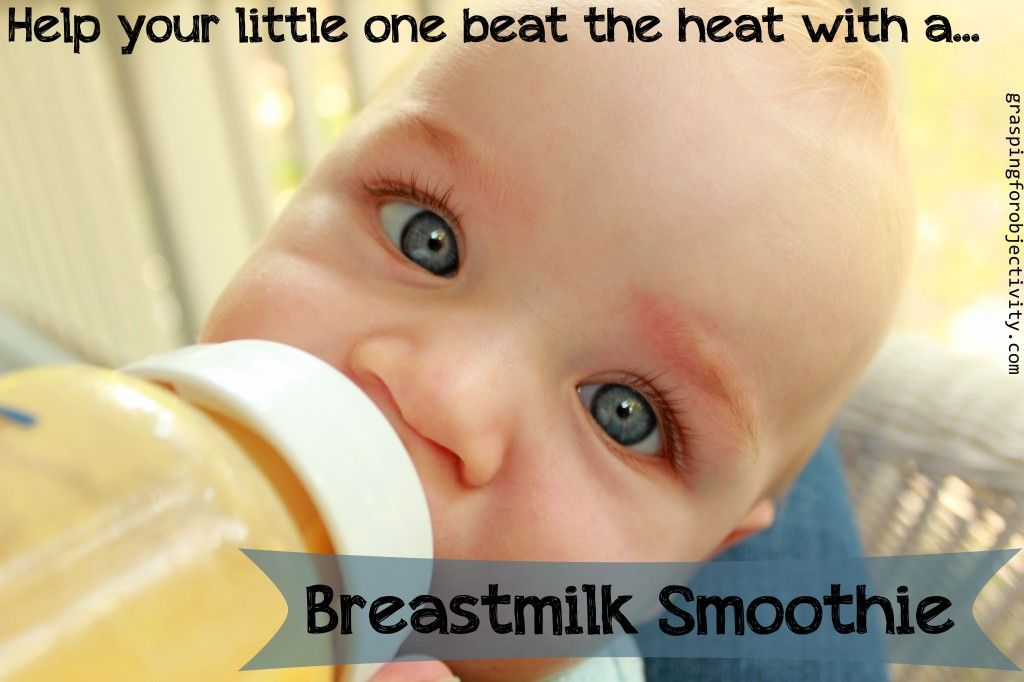 The liquid makes the rings softer and pleasantly cools the gums (the rings can be stored in the refrigerator). Do not save - take only branded, certified products. After all, this is the health of your beloved child. nine0014
The liquid makes the rings softer and pleasantly cools the gums (the rings can be stored in the refrigerator). Do not save - take only branded, certified products. After all, this is the health of your beloved child. nine0014 - Periodically massage the gums with a special nozzle, or just with your finger (wash your hands thoroughly, nails are short, with neatly finished edges), you can use a moistened gauze pad. This procedure will also prevent the occurrence of stomatitis (“Stomatitis in infants - types, causes, symptoms”).
- Breastfeeding your baby often is a great way to soothe your baby and relieve itchy gums.
- Some babies enjoy sucking and chewing bagels, a crust of bread, an apple without a peel - offer it, it's a good distraction. nine0014
- It is strictly forbidden to lubricate the gums with various medications without a doctor's prescription, to give the baby tablets and medicines on his own. Only a specialist - a pediatrician or pediatric dentist can prescribe an ointment or gel to relieve pain, while a preliminary test for allergic reactions is mandatory.
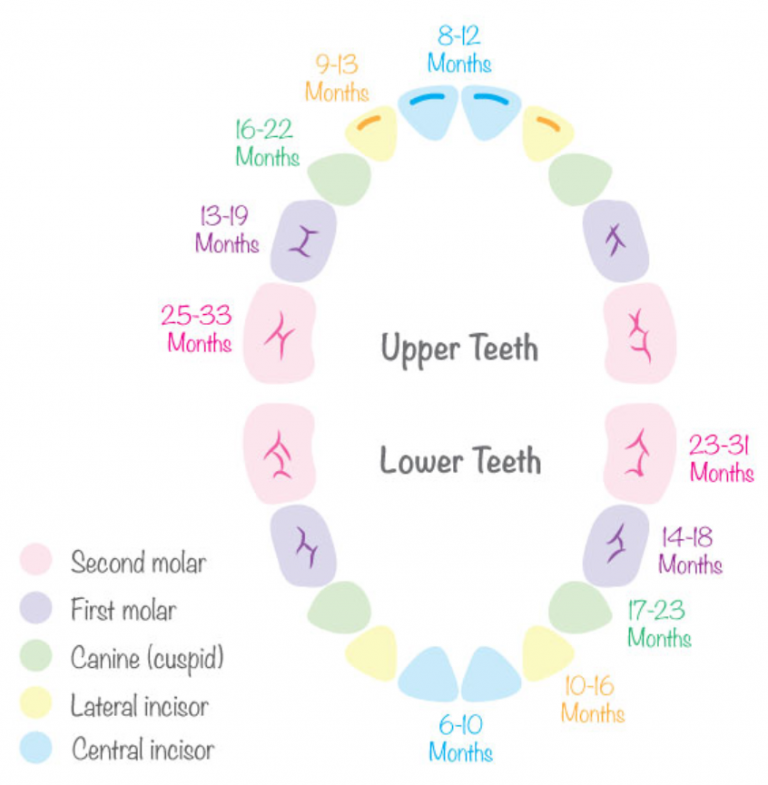 Although ointments and gels with lidocaine (Kamistad, Calgel) are sold without a prescription, you can not lubricate the baby's gums without checking, because if the baby is allergic to lidocaine, the baby may experience anaphylactic shock. For allergy sufferers, the doctor prescribes a special Baby Doctor ointment or others. nine0014
Although ointments and gels with lidocaine (Kamistad, Calgel) are sold without a prescription, you can not lubricate the baby's gums without checking, because if the baby is allergic to lidocaine, the baby may experience anaphylactic shock. For allergy sufferers, the doctor prescribes a special Baby Doctor ointment or others. nine0014 - Try to distract the child, spend more time playing with him, walking.
When should I see a doctor?
It is imperative to consult a pediatrician if the following signs of teething are observed in a child:
- high fever;
- vomiting;
- diarrhea;
- runny nose;
- cough;
- skin rashes;
- convulsions;
- persistent drowsiness; nine0014
- prolonged irritability, capriciousness.
Such symptoms should in any case be a reason to consult a doctor. Often, parents, on the advice of grandmothers, attribute everything to the fact that the child is teething, the temperature, they say, happens in all children. And here it is not. Most children tolerate tooth growth without fever. And fever is a sign of most diseases. Therefore, it is possible to miss the onset of some disease or pathological process that coincides with the period of teething. nine0007
And here it is not. Most children tolerate tooth growth without fever. And fever is a sign of most diseases. Therefore, it is possible to miss the onset of some disease or pathological process that coincides with the period of teething. nine0007
Why does the temperature appear? The fact is that at the site of the eruption of the tooth, the gum swells, which is associated with raising the tooth and an increased influx of biologically active substances. The body reacts to this with a protective increase in temperature - to prevent infection of the gums cut with sharp edges. Tooth temperature lasts one or two days. If the child tolerates it easily, is not prone to convulsions, and the doctor does not find other reasons for the increase in temperature, then it is not necessary to bring it down to 38 degrees. In the case of a longer increase in temperature, an examination of the baby and a doctor's consultation are necessary. nine0007
Should alert vomiting in a child during teething, in case of exclusion of other causes of this condition.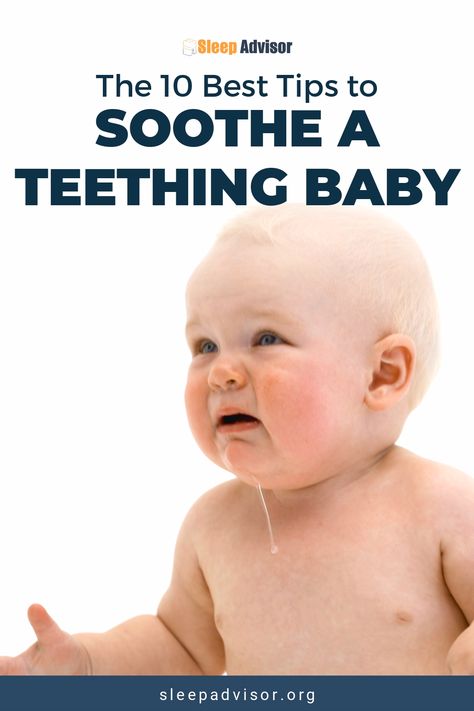 All changes in the gastrointestinal tract have a fairly simple explanation: during this period, it secretes a lot of saliva and the child constantly swallows it often, which causes increased secretion of gastric juice and vomiting (rare), as well as increased intestinal motility, which means that appears diarrhea in a child during teething. Diarrhea is rare (2-3 times a day), discharge is watery, lasts no longer than 2 days. If diarrhea is more frequent, prolonged, streaked with blood, with fever and refusal to eat, urgently seek help from a medical institution - this may be an intestinal infection that the baby brought in when combing the gums. In this case, treatment in a hospital is indicated, since the patient's condition can deteriorate very quickly due to dehydration. nine0007
All changes in the gastrointestinal tract have a fairly simple explanation: during this period, it secretes a lot of saliva and the child constantly swallows it often, which causes increased secretion of gastric juice and vomiting (rare), as well as increased intestinal motility, which means that appears diarrhea in a child during teething. Diarrhea is rare (2-3 times a day), discharge is watery, lasts no longer than 2 days. If diarrhea is more frequent, prolonged, streaked with blood, with fever and refusal to eat, urgently seek help from a medical institution - this may be an intestinal infection that the baby brought in when combing the gums. In this case, treatment in a hospital is indicated, since the patient's condition can deteriorate very quickly due to dehydration. nine0007
The accumulation of saliva in the throat often causes a loose cough, and its flow into the nasal passages causes a fluent, watery coryza. These conditions do not require treatment and pass without a trace in 2-3 days.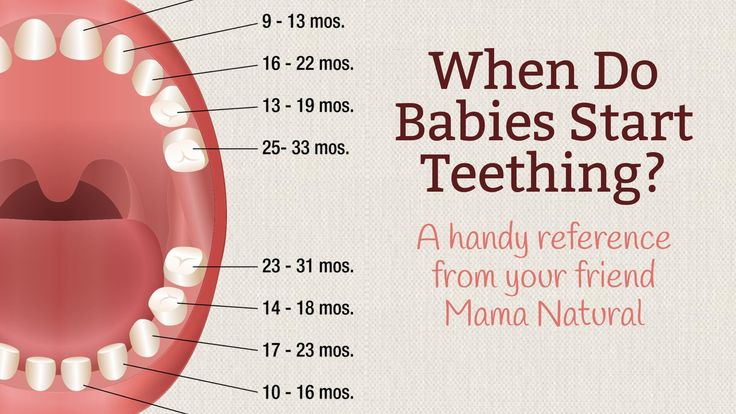 But only a pediatrician can assess the causes and severity of these pathological processes. In order not to confuse real diseases with complicated conditions during teething, in any violation of the behavior or health of the baby, consult a doctor. It is better to be safe a hundred times than to regret a missed opportunity once later. nine0007
But only a pediatrician can assess the causes and severity of these pathological processes. In order not to confuse real diseases with complicated conditions during teething, in any violation of the behavior or health of the baby, consult a doctor. It is better to be safe a hundred times than to regret a missed opportunity once later. nine0007
Teeth are being cut. How to help your child
A child's first teeth appear at a very early age. This time is a difficult test for kids. Children feel pain and discomfort, do not sleep at night and do not let their parents sleep. However, there are various remedies for pain relief and reducing inflammation of the gums that alleviate the suffering of infants.
A child is teething - symptoms
The main signs of teething:
• fever;
• redness of the gums; nine0075 • increased salivation;
• mild cough;
• crying;
• poor appetite;
• indigestion.
These symptoms are similar to the signs of some diseases, but the mistake can be excluded if you know what time the teeth appear.
When the first teeth appear
The question "what time does a child's teething" is impossible to answer accurately. Milk teeth appear at the age of six months with a slight deviation of a month and a half, depending on the genetic predisposition. The incisors and canines begin to appear first, the molars last. By the age of three, all milk teeth have already grown in children. nine0007
Teething - how to help a child
When teething, the gums hurt in babies and the temperature rises. It is not recommended to use an antipyretic if the temperature rises slightly.
To relieve the child of pain, use a child's pain reliever: paracetamol, panadol or nurofen. But before doing this, consult your doctor.
Children's anti-inflammatory gels "Kamistad", "Kalgel" or "Dentinoks" can be used. The composition of these gels includes painkillers and extracts of medicinal herbs. They relieve inflammation and irritation, reduce pain and have antiseptic properties.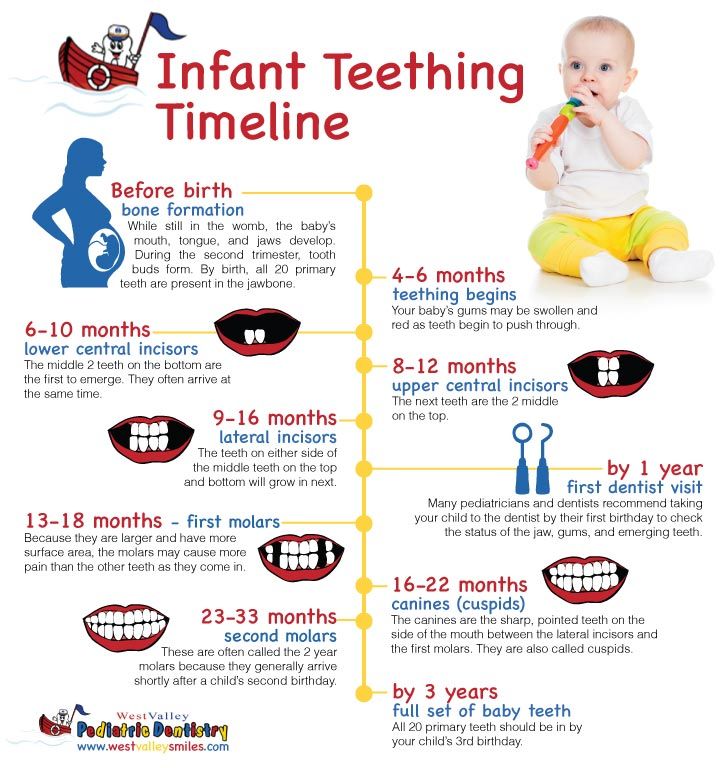 The gel is applied to the gums three times a day in small doses. nine0007
The gel is applied to the gums three times a day in small doses. nine0007
Teethers
When teething, children have an incessant desire to chew something and put everything they see into their mouths. In order to relieve itchy gums, they can be given special teethers.
Teethers are soft rubber toys. Their main task is to massage the gums during the period when the child is teething.
When choosing a teether, pay attention to the quality of the material. Rubber should not be too soft or hard. The first will lead to the fact that the toy will begin to crumble, and the child will swallow its pieces, and the gums will be injured due to the second. Dyes in the composition of the material can only be food. nine0007
Do not leave the teether on the child for the whole day. When teeth appear, their roots are still weak, and the baby can damage them, which will lead to a pathological change in the bite. In addition, if he chews on the toy for a long time, gum irritation will begin.